When the phrase “black cats” echoes through the conversation, it often conjures images of mystery, superstition, and folklore. However, beyond the myths and the moonlit tales, black cats are fascinating creatures with a plethora of intriguing traits and histories.
These black felines hold a special place in societies worldwide, from being symbols of luck to stigmatized beings associated with witches.
And let’s not forget the social and cultural impact they’ve had – for good and ill – that leads many of these creatures to be overlooked in shelters. Let’s brush away the superstitions and learn about the real black cats – their history, abilities, and place in our world today.
let’s leap gracefully into the world of black cats and discover the truth behind their bewitching exterior.
- The Background of Black Cats and Witches
- Black Cats Can Help Your Love Life
- Black Cats Have a Sailing History
- Black Cats Can Resist Disease
- Black Cats Can Change Color
- In Some Places, Black Cats Mean Good Luck
- Black Cats are Not a Breed
- Black is Genetically Dominant
- Most Black Cats Have Yellow Eyes
- They Can Have Short or Long Hair
- Black Cats Have Their Own Day
- Patterns Can Be Hidden Underneath Black Fur
- They're Overlooked in Shelters
- Conclusion
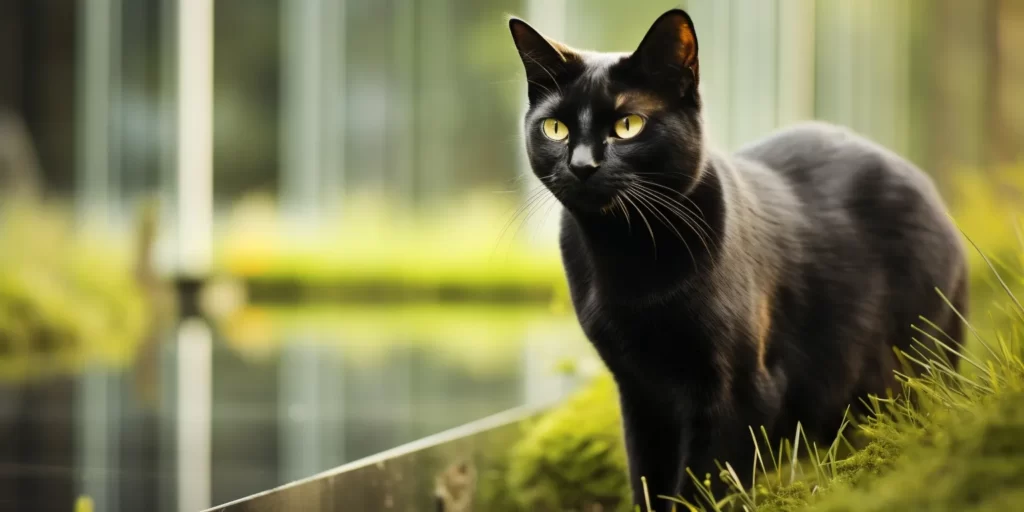
The Background of Black Cats and Witches
Delving into the shadowy corners of history, black cats have often been associated with mystery and magic. One particularly dark chapter of their story intertwines with that of witches. During the Middle Ages in Europe, black cats were feared and linked to witchcraft. It was commonly believed that witches could transform into black cats to roam unnoticed at night.
This superstition led to many tragic outcomes for both felines and humans alike as the hysteria of witch hunts spread across continents.
Nevertheless, not all associations between black cats and supernatural forces were negative. In some myths, they were seen as protectors against evil spirits or as companions that enhanced a witch’s magical abilities.
Even today, pop culture often depicts this historical relationship with a touch of whimsy, harking back to the folklore that cats have nine lives and other tales of mystery.
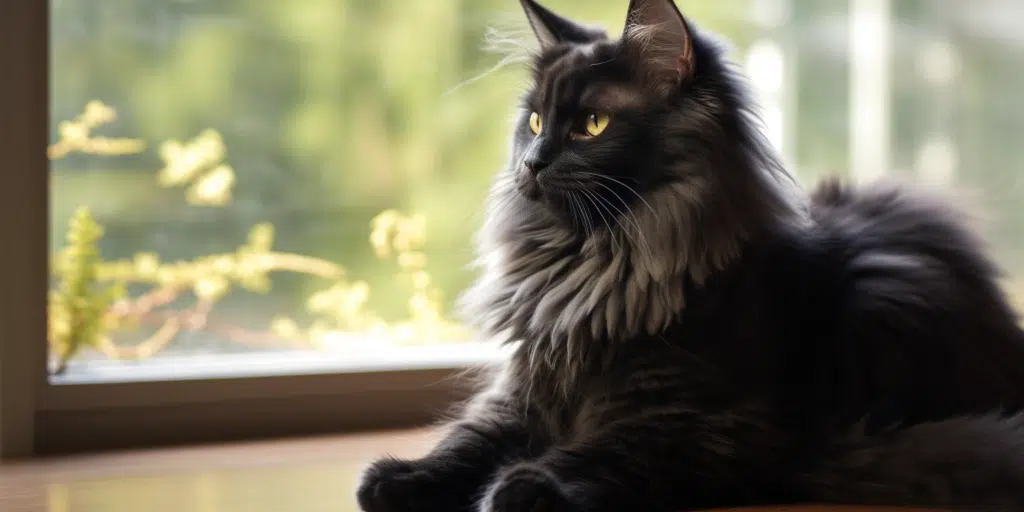
Black Cats Can Help Your Love Life
Stepping beyond folklore into the lighter aspects of black cats’ impact on human life, it is fascinating to note that in some cultures, these midnight-hued felines are believed to attract love and prosperity.
In Japan, for instance, single women who own black cats are said to attract more suitors. It’s thought that the mysterious allure of these sleek pets can indeed rub off on their owners.
In many parts of the world, crossing paths with a black cat is considered a forecast of romance and happiness, rather than the ill omen it’s reputed to be elsewhere. This positive perspective hearkens back to the Egyptian era where cats were revered and considered sacred – a sentiment that can certainly boost anyone’s love life by adopting one of these elegant creatures with the purported power to attract affection.
Black Cats Have a Sailing History
Maritime lore is awash with stories of feline stowaways, often said to bring good luck to sailors. Black cats, in particular, hold significant stature amongst these tales.
Historically known as “ship’s cats,” they were welcomed aboard for their superior rodent-catching abilities and also as companions who could improve sailors’ morale during long voyages.
Not just limited to being practical passengers, black cats were also believed to promise smooth sailing and safe return. Fishermen’s wives would keep black cats at home hoping it would protect their husbands at sea – an interesting twist on the juxtaposition of black cats as both good omens and bad.
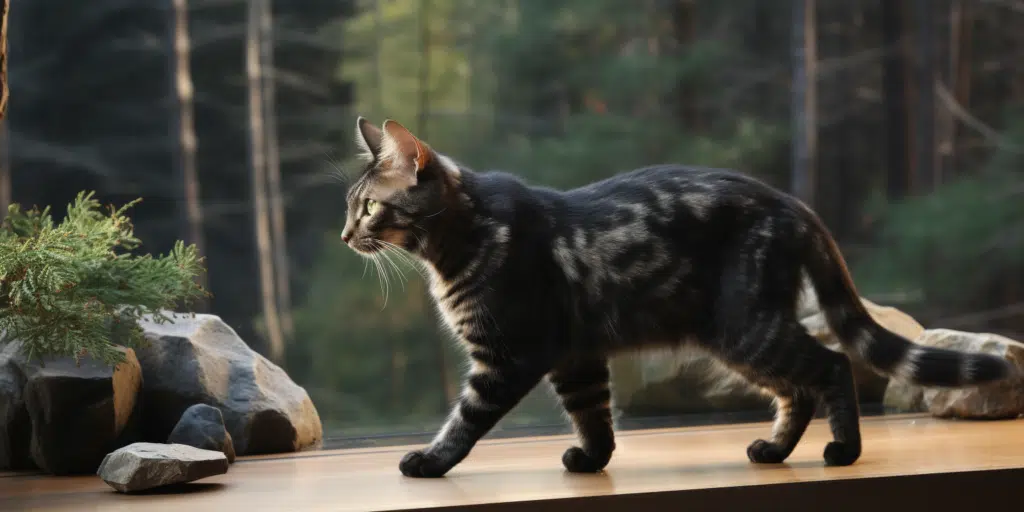
Black Cats Can Resist Disease
It seems that black cats may have more than just luck on their side; science suggests that their sable coat color could be linked to certain biological advantages. Research indicates that genetic mutations responsible for a cat’s fur color may offer some protection against diseases. This means that black cats might be less susceptible to illnesses such as certain viral infections that affect felines.
Furthermore, this same genetic disposition can also contribute to a more robust immune response among black cats. Their dark fur is not simply a matter of pigmentation but may be an evolutionary trait that endows them with a better chance at longevity and healthiness – giving them yet another elusive edge over their multi-colored counterparts.
Black Cats Can Change Color
If you’ve ever noticed a black cat basking in the sun developing a rusty tint, you’ve witnessed a curious phenomenon: some black cats can change color due to prolonged exposure to sunlight.
This rusting effect occurs when the pigment in their fur, called melanin, reacts to sunlight over time – effectively ‘bleaching’ their dark coats.
This remarkable ability isn’t harmful to black cats; it merely adds another layer of mystique to their already enigmatic presence. The change is usually temporary; they will likely return to their original jet-black shade once cool weather sets in and their exposure to direct sunlight decreases.
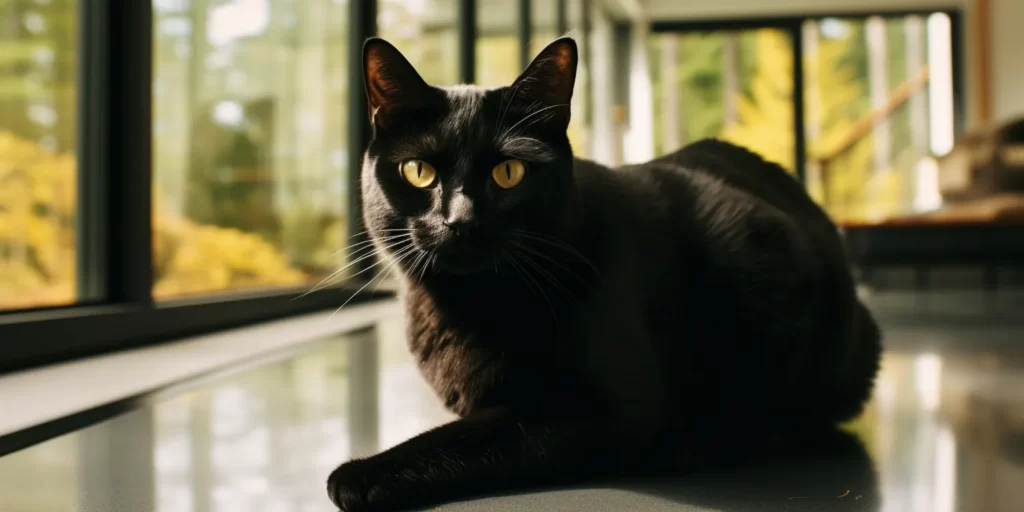
In Some Places, Black Cats Mean Good Luck
The belief system around black cats varies dramatically from one culture to another. In Britain, for example, a black cat crossing your path is seen as an omen of good luck, turning the more common superstition on its head. Similarly, Scottish folklore suggests that an unexpected arrival of a black cat at your home signifies prosperity.
These positive associations with black cats have deep historical roots. For instance, in ancient Egypt, all cats – including those with inky fur – were held in high esteem and worshipped as sacred animals connected to gods and goddesses. This reverence presents a stark contrast to other cultures’ beliefs and demonstrates how black cats have been both adored and vilified throughout history.
Black Cats are Not a Breed
Although we sometimes think of them as a distinct category, it’s important to clarify that black cats are not a specific breed. Instead, their alluring ebony coats can be found across a diverse array of feline pedigrees.
From the sleek Bombay, with its panther-like appearance, to the fluffy Norwegian Forest Cat, many breeds boast members with a luxurious black fur coat. This diversity means that if you’re drawn to black cats, you’ll be able to choose from a wide spectrum of breeds, each with their own unique characteristics and temperaments.
This common misconception about black cats being their own breed may stem from the prominence of their color and its strong cultural resonance. However, the truth is their coloration is a matter of pigmentation and genetics rather than breed-specific traits. So whether you’re seeking a cuddly companion or an elegant hunter, there’s likely a black-coated cat that matches your lifestyle, all without being tied down to a particular breed standard.
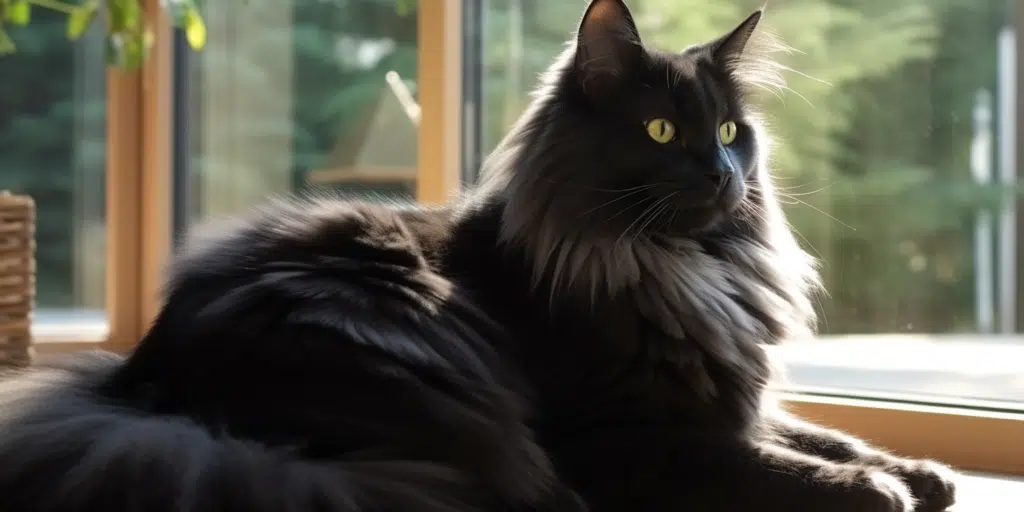
Black is Genetically Dominant
When it comes to feline genetics, black fur is often dominant. This means that when one parent has the gene for black fur, it is more likely that the offspring will also flaunt a dark coat. This genetic principle is due to a pigment called eumelanin, which is responsible for the rich, dark hue of a black cat’s fur. Because of the dominance of this gene, black cats are frequently seen in the general cat population, making them as common as they are captivating.
This genetic trait is not just interesting for those taken by the beauty of black cats but is also valuable in understanding cat breeding and population genetics. Indeed, this dominant genetic trait helps explain why these cats appear widely across breeds and regions, further emphasizing just how widespread and truly universal black coats are in the feline world.
Most Black Cats Have Yellow Eyes
The striking contrast between the deep, velvety black fur and shiny yellow eyes of many black cats is no coincidence; it’s due to genetics. The high melanin content that gives these cats their blackout coats also influences their eye color, which typically manifests as a yellow to golden shade. This brilliant eye color is due to pigments which are concentrated not only in their fur but also in their irises.
The intensity of the yellow pigment can vary from cat to cat, creating a spectrum that ranges from a soft amber glow to a bright copper hue. This remarkable feature adds to the allure and mystery that surrounds these felines and gives them an even more distinctive appearance that can be downright mesmerizing.
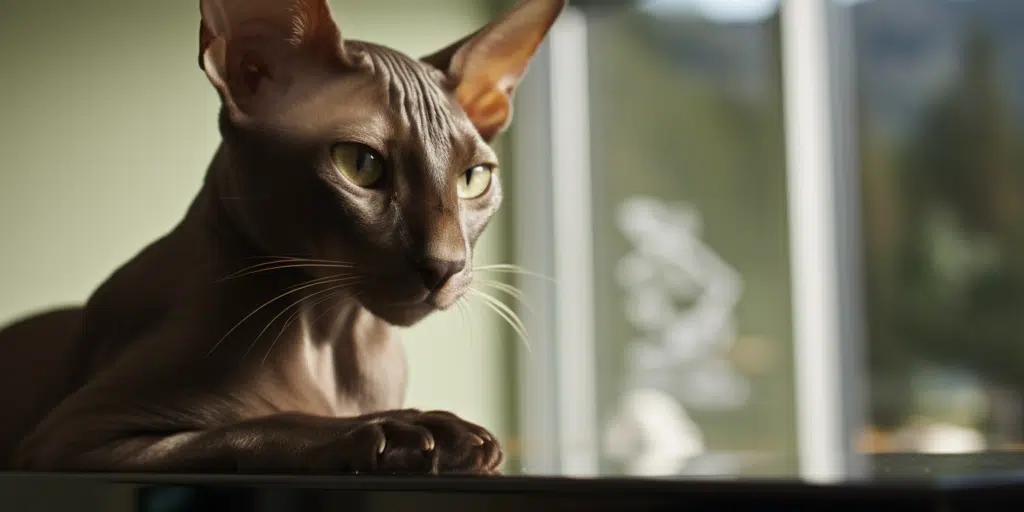
They Can Have Short or Long Hair
Black cats come in an array of splendid fur lengths – from sleek short-haired beauties that require minimal grooming to majestic long-haired breeds whose fluffy coats offer a luxurious look and feel. This variance comes from the diversity in their breeds and genetic backgrounds. Regardless of the length of their fur, black cats carry an air of sophistication and grace that is truly unrivalled.
Having either short or long hair does not affect the health or temperament of black cats; it simply provides more options for individuals who prefer certain grooming commitments or aesthetic traits. Whether you’re drawn to the low-maintenance sleekness of a short-haired black cat or enchanted by the opulent fluff of a long-haired variety, there’s a black cat to suit every preference.
Black Cats Have Their Own Day
In recognition of these often misunderstood creatures and in response to their historical plight and modern-day issues with adoption, Black Cat Appreciation Day was established. Celebrated on August 17th, this day aims to dispel myths surrounding black cats, highlight their unique beauty, and encourage people to adopt these less-fortunate felines. It’s a day dedicated to celebrating black cats for who they are – loving and lovely pets deserving of attention and homes.
Black Cat Appreciation Day also provides an opportunity for shelters and rescues to showcase their ebony-furred inhabitants, potentially increasing adoption rates and raising awareness about the challenges these cats face. It’s a chance for cat enthusiasts and animal advocates alike to spread positive messages and combat the stigmas still plaguing these beautiful animals.
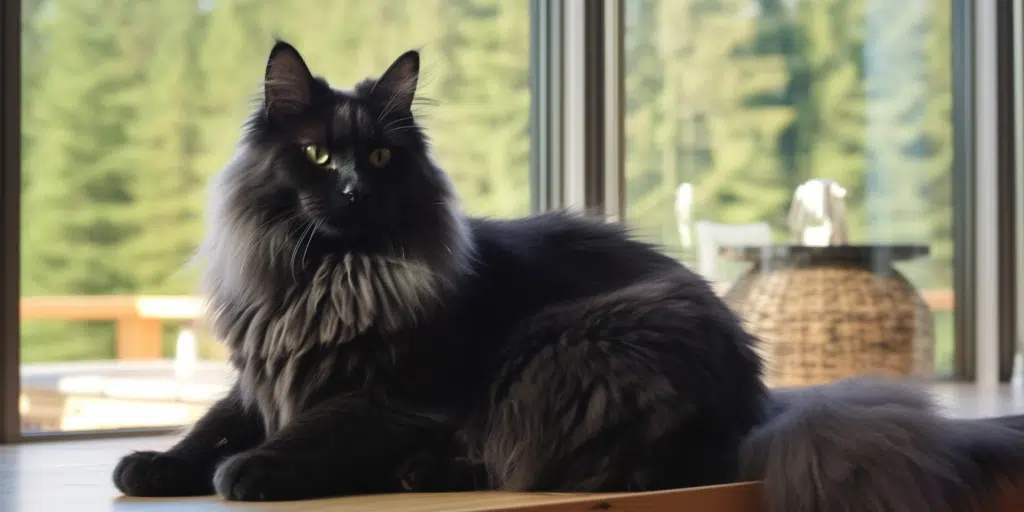
Patterns Can Be Hidden Underneath Black Fur
While they appear to sport solid coats of darkness, some black cats actually have patterns hidden underneath their top layer of fur. These ghostly markings may be stripes or spots that are only discernible in certain lighting or as they age – a phenomenon that adds another fascinating layer to these already intriguing felines.
These elusive patterns are often remnants of their more vividly-marked ancestors and can sometimes become more visible when exposed to sunlight for extended periods. This “shadow striping” is not uncommon in kittens but tends to fade as they grow older. Yet, it still serves as an echo of the genetic tapestry that makes up each individual cat’s unique identity.
They’re Overlooked in Shelters
Despite their undeniable charm and fascinating attributes, black cats often remain the least adopted in animal shelters. Their high numbers combined with lingering superstitions mean they are frequently passed over in favor of cats with lighter or more colorful coats. This trend is not only saddening but also unjust given what loving and endearing pets they can be.
It’s essential for potential pet owners to see beyond color and consider the personality and potential companionship behind those gleaming yellow eyes. Black Cat Appreciation Day plays a vital role in this by shedding light on the plight of these overlooked animals and encouraging adoption based on compatibility rather than coat color alone.
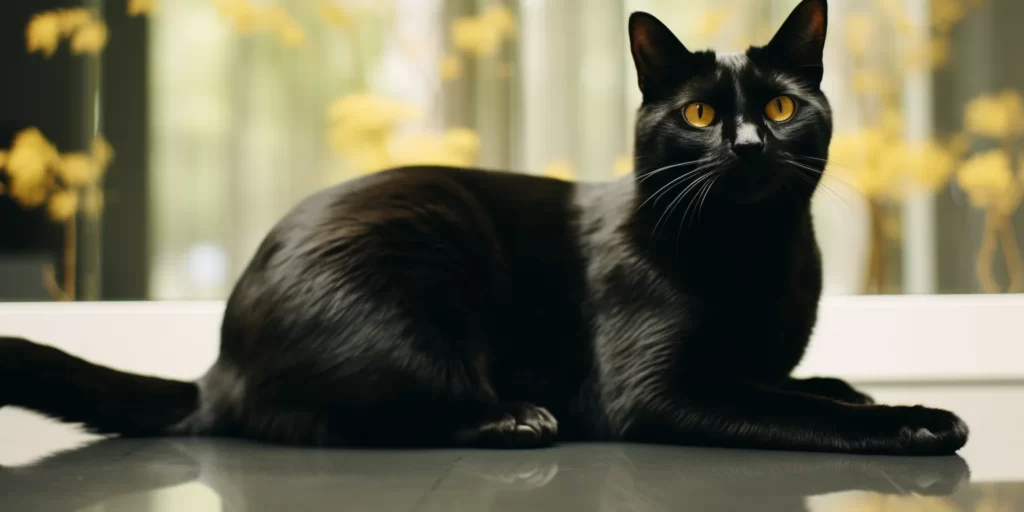
Conclusion
Black cats are an enchantingly diverse group – not bound by breed but united in their lustrous dark fur that has shrouded them in mystery throughout history. From their varied associations with luck to the genetic dominance that paints them in ebony shades, these felines are rich in charm and character. Their individuality extends beyond their fur color too – their personalities are as diverse as any other cat’s, their health benefits unique, and their place in our hearts incontrovertible.
As we look beyond superstitions and into what makes black cats truly special – from yellow-eyed gazes to hidden fur patterns – it’s clear that they have much more to offer than meets the eye. They deserve recognition not just on Black Cat Appreciation Day but every day. For those considering bringing a new feline friend into their homes, remember that adopting a black cat could mean providing a loving home to an often overlooked animal eager for companionship.
In embracing black cats for all that they are, we enrich our lives with their presence while dispelling myths and creating new narratives of joy, companionship, and mutual respect between humans and these extraordinary creatures.